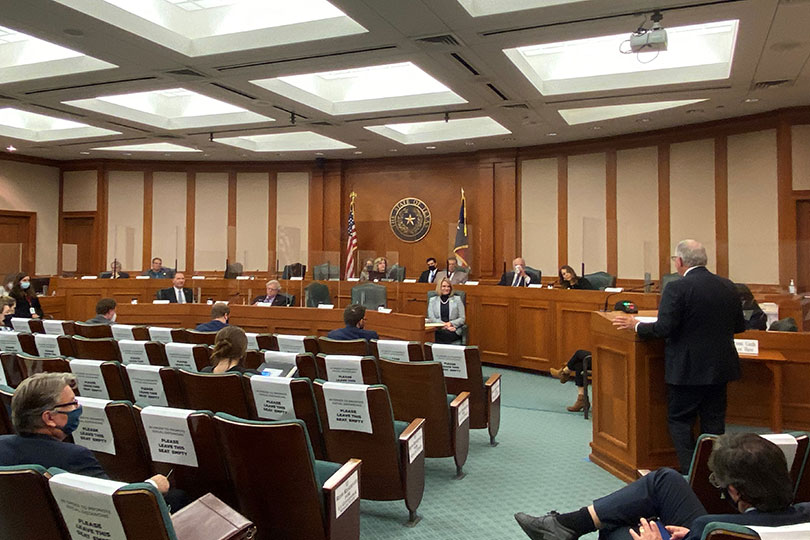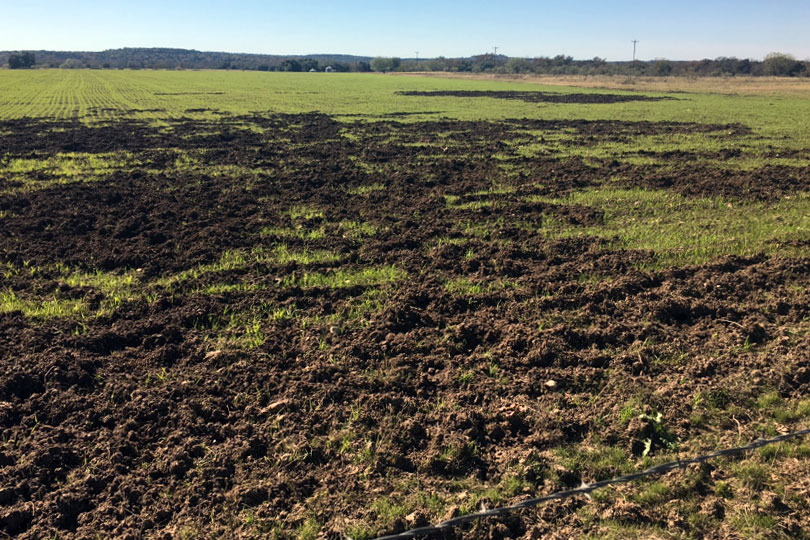By Julie Tomascik
Editor
The feral hog population is expanding at an alarming rate in the Lone Star State, leaving farmers and ranchers facing thousands of dollars in damages each year. That’s what one rancher told a Senate Committee this month, testifying in support of more tools to help control and eradicate the invasive species.
Feral hogs cause Texas agriculture more than $230 million in losses annually, according to a U.S. Department of Agriculture survey.
“Hunting and trapping alone can’t control them,” Mickey Edwards, a Lampasas County rancher, said. “We need more tools for this fight.”
The Senate Finance Committee hearing was focused on the Texas Department of Agriculture’s budget, including a budget rider from 2017 attached to the appropriations bill. The rider prevents the state agency from registering any warfarin toxicant to control feral hogs.
Warfarin underwent a federal review and was approved by the U.S. Environmental Protection Agency (EPA). In the process, EPA updated the label, removing unnecessary restrictions and providing more clarity for applicators.
“The concerns raised about the safety of this product have been shown to be unfounded based on additional university studies,” Edwards, who serves as Texas Farm Bureau’s (TFB) district 8 state director, said.

Toxicant baits like warfarin are a viable next step and effective tool landowners should have the option to use, TFB and other agricultural organizations noted.
With the feral hog population on the rise, the threat to fields, pastures, water sources and livestock also increases.
The invasive species can degrade water quality and introduce E. coli, making the water unsafe to drink. They also pose a threat to livestock and wildlife, preying on small animals.
“A budget rider was proposed in the bill patterns for the Texas Department of Agriculture and the Texas A&M AgriLife Extension Service that prohibits the use of warfarin-based feral hog toxicants that can be used to control the population growth of feral hogs,” Texas Farm Bureau Associate Legislative Director Harold Stone said. “But we hope the budget rider will be deleted from the bill patterns of the appropriation bill for these agencies, and that will allow them to spend appropriation money to research and certify these products that can be used for feral hog control by landowners.”


Something must be done to eradicate these feral hogs. They create so much damage to fields of grass and crops. The devastation is incomprehensible. Each year my grazing pastures suffer significant damage to my fields..
I am against the use of poison to control hogs as I doubt there has been a true study on how it affects other wildlife in real world situations. Put a real bounty on dead hogs and you will see a decease in population. Currently there is still money to be made by hog hunting and they will not use the poison any way. If it is safe, start the programs in wildlife management areas or refuges for 10 years and report back.
From what I have seen. The problem with feral hogs is, the farmers/ranchers can’t charge enough to shoot them. If the problem was truly that bad I’m sure they would let people on their land for free.
Let the hunters in. And facilitate commercial hunting and marketing.
Please do everything you can to convince the state legislature to approve warfarin for wild hog control. I grow Christmas trees and hay in Waller County and hog rooting has caused major problems for us.
If there was no money in Hog hunting would we be talking about banning Warfarin?
We need help ASAP. Damage to crops is mounting and tremendously effects yield not to mention it beats your your brain if you have to drive over them!
Can’t some really smart person find a reliable birth control method for these destructive animals? I was in 4-H when there was a pest almost eradicated, fooled by creating sterile mates, was it the cotton bowl weevil fly? I’m 70 now and thankful for many modern creations of science. Surely the brilliant minds out there can figure this one out, too. The researchers are working out there, toward goals. Please work on this one. Our land is suffering.
I hunt hogs on my spare time. I’m an ex Air Force heavy weapons expert who grew up on a horse and cattle ranch in Northern California (it’s not whackyville up North).
I have found putting pressure on hogs can keep them off your property for a while. I don’t believe in throwing out corn as your only feeding their growth. That’s really all outfitters are trying to do (feed them to make money at your expense).
I enjoy going out on the hunt and if I don’t get a kill or after I do, I make sure the hogs know this is a dangerous area. That tends to keep them at bay for a while.
I’m willing to talk face to face with any rancher/farmer so they can look me in the eye and know that I’m not there to make money off of them but hopefully hunt and keep those pest off your property for a while between trips.
I don’t pay to hunt because I’m not out to profit off of you, only try to help while I get to hunt responsibly.
Put up a sign on your property if you have a hog problem. I’m sure anyone with a rifle would love to help you, we just don’t want to PAY you.